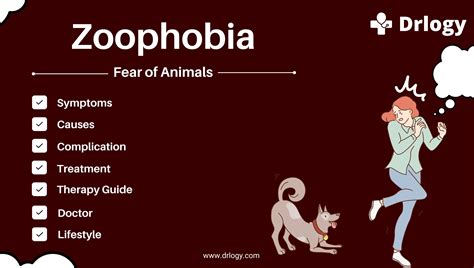Introduction

Pet ownership offers a wealth of benefits, from unconditional companionship to improved physical and mental well-being. However, for some individuals, the presence of animals can evoke intense fear or phobia known as zoophobia. This article delves into the complexities of pet fear and phobias, exploring their causes, symptoms, and effective coping mechanisms.
What is Zoophobia?
Zoophobia is an excessive and irrational fear of animals. It can manifest in various forms, ranging from specific animal phobias (e.g., fear of dogs, cats, or spiders) to generalized anxiety around all animals.
Causes of Pet Fear and Phobias
The origins of zoophobia are multifaceted and often involve a combination of factors, including:
- Negative experiences: Direct or indirect exposure to traumatic events involving animals can lead to the development of phobias.
- Genetic predisposition: Research suggests that individuals with family members who suffer from phobias are more likely to develop them.
- Temperament: Certain personality traits, such as anxiety and neuroticism, may increase the risk of developing phobias.
- Cognitive distortions: Misconceptions and exaggerated perceptions about animals can fuel irrational fears.
Symptoms of Pet Fear and Phobias
The symptoms of zoophobia can vary depending on the individual and the severity of the phobia. Common manifestations include:
- Panic attacks
- Intense anxiety and fear
- Avoidance behaviors
- Physical reactions (e.g., rapid heartbeat, sweating, shortness of breath)
- Negative thoughts and avoidance
- Avoidance of situations or places where animals may be present
- Difficulty concentrating or sleeping
Impact of Pet Fear and Phobias
Zoophobia can significantly impair an individual’s daily life. It can lead to social isolation, missed opportunities, and diminished quality of life. Moreover, avoidance behaviors can perpetuate the phobia, reinforcing the fear and preventing habituation.
Overcoming Pet Fear and Phobias
While overcoming zoophobia can be challenging, several effective treatment options are available.
1. Gradual Exposure Therapy
This technique involves gradually exposing the individual to the feared animal in a controlled and safe environment. The goal is to desensitize the person to the animal and reduce their anxiety response.
2. Cognitive Behavioral Therapy (CBT)
CBT helps individuals challenge distorted thoughts and beliefs that contribute to their phobia. By identifying and replacing irrational fears with realistic perspectives, CBT aims to reduce anxiety and increase coping skills.
3. Medication
In some cases, medication may be prescribed to manage anxiety and panic symptoms associated with zoophobia.
Common Mistakes to Avoid
- Avoiding the feared animal: This reinforces the phobia and prevents habituation.
- Giving in to the fear: Allowing avoidance behaviors only perpetuates the problem.
- Using alcohol or drugs to cope: These substances may provide temporary relief but ultimately hinder progress.
Why Overcoming Zoophobia Matters
Overcoming pet fear and phobias not only improves an individual’s quality of life but also has broader societal benefits.
How to Benefit from Overcoming Pet Fear and Phobias
- Reduced anxiety and stress
- Enhanced self-confidence
- Increased social opportunities
- Improved physical and mental well-being
Highlights
- Zoophobia affects a significant portion of the population, often rooted in negative experiences and cognitive distortions.
- Effective treatment options, such as exposure therapy, CBT, and medication, are available to overcome zoophobia.
- Overcoming pet fear and phobias leads to improved mental health, enhanced social connections, and increased life satisfaction.
Case Detail
Patient: A 32-year-old woman with a phobia of dogs.
Treatment: Gradual exposure therapy with a certified therapist.
Outcome: After 12 sessions, the patient was able to visit a dog park without experiencing significant anxiety.
Useful Tables
| Animal Phobia | Prevalence (%) |
|---|---|
| Arachnophobia (fear of spiders) | 3-5 |
| Ophidiophobia (fear of snakes) | 2-3 |
| Cynophobia (fear of dogs) | 1-2 |
| Ailurophobia (fear of cats) | 1-2 |
| Ornithophobia (fear of birds) | 1-2 |
| Treatment Modality | Effectiveness (%) |
|---|---|
| Exposure Therapy | 70-80 |
| Cognitive Behavioral Therapy (CBT) | 60-70 |
| Medication | 50-60 |
| Signs of Zoophobia | Actions |
|---|---|
| Panic attacks | Avoidance |
| Intense anxiety | Physical reactions |
| Negative thoughts | Difficulty concentrating |
| Avoidance behaviors | Missed opportunities |
| Benefits of Overcoming Zoophobia | Examples |
|---|---|
| Improved quality of life | Reduced anxiety, enhanced self-confidence |
| Increased social opportunities | Attending pet-friendly events |
| Improved physical and mental well-being | Reduced stress, better sleep |
Conclusion
Pet fear and phobias are common and debilitating conditions that can significantly impact an individual’s life. By understanding the causes, symptoms, and effective treatment options, we can help those affected overcome their fears and experience the joy and companionship that animals have to offer.





















